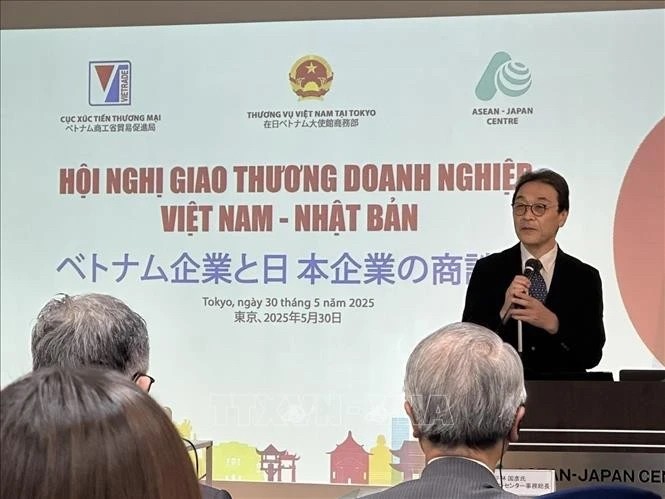Vietnam News Today (Feb. 2): Bustling Export-import Activities Signal Boon Year Ahead
| Vietnam News Today (Jan. 31): Traditional Friendship Shapes Future Vietnam – Russia Cooperation | |
| Vietnam News Today (Feb. 1): Vietnam’s Lunar New Year Enchants Foreigners |
| Vietnam News Today (Feb. 2) notable headlines Bustling export-import activities signal a boon year ahead Vietnam braces for intense cold wave in February, expert warns HCM City records rise in tourist arrivals and revenue during Tet Vietnamese coast guard rescues Filipino sailor in distress Vietnam’s digital transformation: A game-changer for economic growth OVs in Thailand celebrate Tet, honouring President Ho Chi Minh Businesses advised to expand exports to EU via official channels Great opportunities for cooperation with Vietnam in 2025: Malaysian Ambassador Vietnamese traditional calligraphy during Tet |
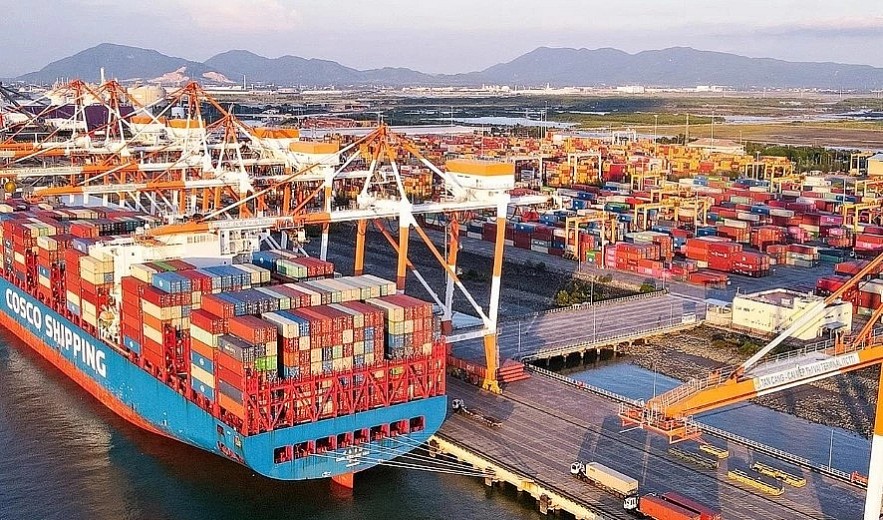 |
| The Cai Mep – Thi Vai Port complex. |
Bustling export-import activities signal a boon year ahead
Vibrant export-import operations at the start of Lunar New Year
On January 31, 2025 (the third day of Tet), 752 tons of seafood and fruit were successfully exported through the Bac Luan 2 border gate to China. These shipments, which had been pre-registered, were cleared smoothly and quickly.
To facilitate export-import activities, border gate authorities arranged for staff to work during Tet to ensure the swift and efficient processing of goods, ensuring the safety and smooth flow of cross-border operations. Additionally, immigration services operated throughout Tet to serve both locals and visitors at the Mong Cai (Vietnam) – Dongxing (China) International Border Gate.
At the Kim Thanh International Border Gate in Lao Cai city, export-import activities continued as usual throughout Tet. On the first day of the Lunar New Year, nearly 200 tons of Vietnamese fruits, valued at over US$100,000, were exported to China. The main exports included dragon fruit, rambutan, mango, and watermelon, driven by strong demand in China during Tet. Over the past few days, it is estimated that between 200 and 350 trucks have passed through the gate daily, with exports mostly consisting of traditional products like dragon fruit, watermelon, bananas, and rambutan, while imports included coke, fertilizers, and vegetables.
Along with the lively activities at the border gates, on January 31, at Cai Lan Seaport, Quang Ninh Port Co., Ltd. welcomed two ships: Sendai Spirit, carrying 38,000 tons of wood chips for exports, and Oriental Breeze, transporting 35,000 tons of wood chips. Upon their arrival, the port efficiently managed the cargo to expedite unloading.
On January 29 (the first day of Tet), the Cai Mep – Thi Vai Port complex welcomed six container ships. The EVER MEMO, a Singaporean-flagged vessel, which is 366 meters long and carries 16,285 TEUs, was one of the largest.
According to the Vung Tau Maritime Port Authority, during the 29th and 30th of January, the Cai Mep – Thi Vai complex hosted 13 container ships, including large vessels from global markets. These ships mainly carried export and import goods. During the holiday, customs officers and port workers maintained regular shifts to ensure smooth operations for both cargo handling and clearance.
In Ho Chi Minh City, on New Year’s Eve, Cat Lai Port welcomed seven container ships, handling nearly 10,000 TEUs (equivalent to 140,000 tons of cargo). In the first week of Tet, Cat Lai Port is expected to receive 76 ships, with a throughput of 110,000 TEUs, or over 1.5 million tons of goods, marking a 9% increase compared to last year’s holiday.
Optimism for a prosperous year ahead
Export-import activities were viewed as a bright spot of 2024, with the country’s trade turnover reaching over US$786.28 billion, up 15.2% compared to 2023. This marked a new record, surpassing the previous high of US$730 billion set in 2022, according to the General Department of Customs.
Dr. Le Quoc Phuong, former Deputy Director of the Center for Industrial and Trade Information, predicts that export-import activities in 2025 will benefit from favorable conditions, driven by an improving global economy, particularly after the US Federal Reserve stopped raising interest rates. The high inventory levels in key export markets, especially the EU and the US, are gradually being resolved.
Meanwhile the government has carried out comprehensive support measures for the national economy. The Ministry of Industry and Trade (MoIT) has proactively identified challenges and risks in export markets and proposed solutions to develop new markets. Additionally, trade defence measures have been promptly applied, benefiting local businesses.
The Vietnamese business community, with its growing capabilities, has shown greater agility in adapting to a volatile and unpredictable market, cited VOV.
In this context, the MoIT has carried out several initiatives to further promote export-import activities in 2025. Minister Nguyen Hong Dien emphasized that the ministry will focus on market information to better support businesses in export-import operations. The ministry will also streamline administrative procedures and promote e-commerce and the digital economy to diversify export markets.
Additionally, the ministry will continue to enhance border trade operations, focusing on official exports through border gates, especially to China.
On January 16, 2025, Deputy Prime Minister Tran Hong Ha approved a detailed master plan for ports and related infrastructure from 2021 to 2030, with a vision to 2050. The plan includes a capital investment of approximately VND351.5 trillion for port infrastructure by 2030, which covers maritime and port facilities.
This plan highlights the government’s commitment to improving the port system and transport connectivity, which will significantly boost export-import activities in the coming years, while enhancing Vietnam’s foreign trade performance.
In 2025, the Ministry of Industry and Trade aims for a 12% growth in export-import turnover compared to 2024, a challenging but achievable target.
Vietnam braces for intense cold wave in February, expert warns
These systems are anticipated to be stronger than the average recorded in previous years, particularly in the latter half of the month, resulting in extended spells of severe cold across northern regions.
According to Tran Thi Chuc, deputy head of the Climate Forecast Division at the National Center for Hydro-Meteorological Forecasting, cold air masses will continue to influence the country’s weather.
These systems are anticipated to be stronger than the average recorded in previous years, particularly in the latter half of the month, resulting in extended spells of severe cold across northern regions.
Throughout the month, average temperatures across the country will be close to historical norms. However, northern and central regions will see temperatures dipping 0.5 to 1 degree Celsius below the seasonal average, said Chuc.
Rainfall levels are expected to remain consistent with previous years, except for the central region, where precipitation could exceed historical averages by 10-20mm. The central region may also experience scattered showers and occasional thunderstorms during the month.
She warned that various extreme weather phenomena, including fog, thunderstorms, lightning, frost, and hoarfrost, could emerge nationwide, according to VNA.
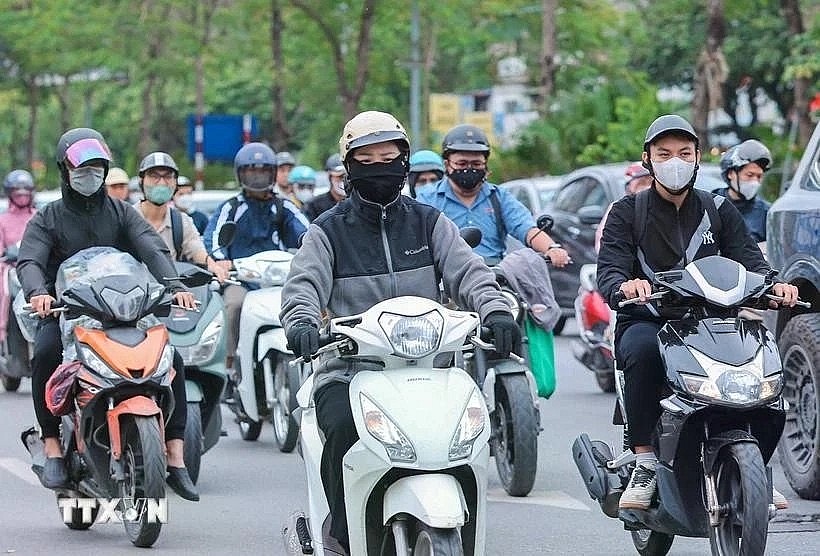 |
| Motorcyclists wear warm clothes and gloves when traveling outdoors (Photo: VNA) |
At sea, cold air masses may trigger strong winds and high waves, posing risks to maritime activities. On land, prolonged cold spells could impact livestock, crops, and public health, particularly in northern mountainous areas where frost and hoarfrost are likely.
Foggy conditions could reduce visibility, increasing the risk of traffic accidents, she cautioned.
Authorities have advised residents to stay updated on weather forecasts via the National Center for Hydro-Meteorological Forecasting’s website and official media channels.
Local governments and disaster management agencies have been urged to swiftly disseminate weather alerts, enforce safety regulations, and restrict access to high-risk areas prone to thunderstorms and lightning strikes.
HCM City records rise in tourist arrivals and revenue during Tet
Ho Chi Minh City has welcomed around 2.1 million tourists since the start of the Lunar New Year (Tet), up 16.7% on-year.
According to the municipal Department of Tourism on February 1, tourism revenue during the holiday reached VND7.69 trillion, marking a 17.4% increase compared to the same period last year.
During the reviewed period, the southern city welcomed 87,358 foreign visitors, a 16.5% annual increase.
These gains are attributable to the city's organization of events celebrating the Lunar New Year of the Snake and its ongoing efforts to enhance the quality of its tourism offerings, cited VOV.
 |
| Photo: VOV |
Thousands of holidaymakers flocked to Nguyen Hue Flower Street, while other popular attractions such as the Tet Book Street, Tao Dan Spring Flower Festival, and tourist sites like Dam Sen and Suoi Tien also drew large crowds.
Additionally, many local travel agencies offered special tour packages to introduce foreign visitors to the Lunar New Year festival, providing an opportunity to explore Vietnam’s rich traditional culture.
Vietnamese coast guard rescues Filipino sailor in distress
The Vietnam Coast Guard has brought ashore a Filipino sailor who fell ill aboard a China’s Hong Kong-flagged vessel off the coast of southern Ba Ria - Vung Tau province.
According to the Vietnam Coast Guard Region 3 Command, at 2:30 February 1, the Vietnam Coast Guard received an urgent request for help. Sailor named Rholand T. Boiser aboard the Deryoung Sunnysky was experiencing severe abdominal pain, and struggling to breathe with an oxygen supply that was running low. The ship’s captain called for immediate medical assistance.
At 2:35 am, Coast Guard vessel 2011 left the port, carrying a medical team and officers of the Con Dao district border guard, VNA reported.
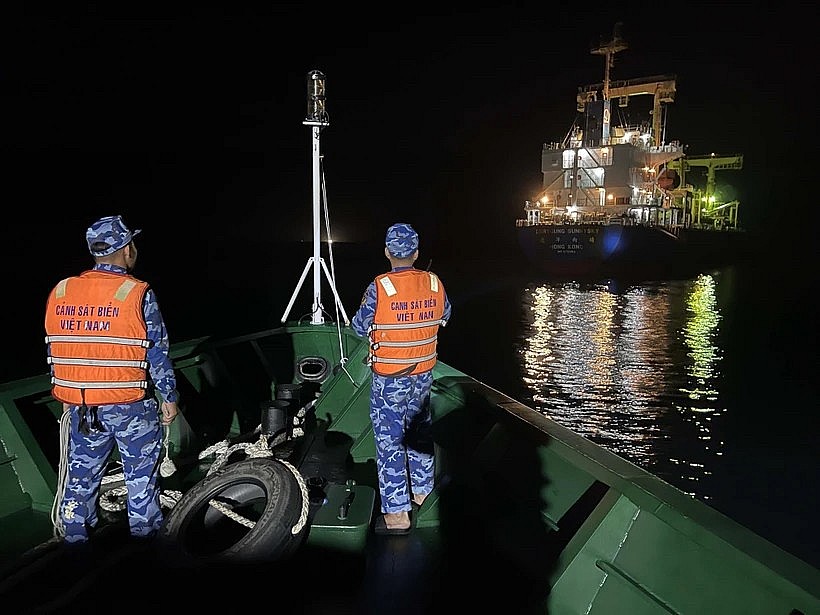 |
| Coast Guard vessel 2011 approaches the Deryoung Sunnysky ship (Photo: VNA) |
By 3:15 am, the Coast Guard vessel reached ship Deryoung Sunnysky, where the medical team boarded and administered first aid to the patient. At 4:05 am, Boiser was transferred to the Coast Guard vessel 2011, which then transported him to Con Dao district for further treatment at the Con Dao medical center.
Vietnam’s digital transformation: A game-changer for economic growth
With over 90% of countries implementing digital transformation strategies, Vietnam is keeping pace by integrating technology into everyday life, driving economic and social progress.
Digital transformation has become a key factor in enhancing national competitiveness and driving socio-economic development.
It is no surprise that digital transformation has become an irreversible global trend, with over 90% of countries having implemented national digital transformation strategies. Vietnam is no exception and has made significant strides in this field.
Extending digital transformation to the people
One of the most profound impacts of digital transformation in Vietnam has been the shift toward cashless payments.
Instead of using physical cash, people can now make transactions anytime and anywhere through digital payments, ensuring convenience, speed, and security.
From paying for a simple iced tea via QR code to grocery shopping with just a smartphone or placing online orders from home, cashless payments have deeply integrated into everyday life.
According to the State Bank of Vietnam, in the first seven months of 2024, cashless transactions reached nearly 9.3 billion transactions, with a total value exceeding VND 160 quadrillion. This surge in cashless payments is closely linked to the rapid expansion of e-commerce.
A recent report on Southeast Asia’s digital economy by Google, Temasek, and Bain & Company revealed that Vietnam’s total digital economy gross merchandise value (GMV) grew by 16% to reach USD 36 billion in 2024.
E-commerce and online travel were the two main drivers, with e-commerce GMV increasing by 18% to USD 22 billion and online travel growing by 16% to USD 5 billion.
Additionally, online ride-hailing and food delivery services reached a GMV of approximately USD 4 billion, reflecting a 12% increase. The report also highlights Vietnam as one of the fastest-growing digital economies in the region.
Another area significantly impacted by digital transformation is public administration services. The National Public Service Portal, which provides essential e-government services under Scheme 06, has become an indispensable tool for citizens.
Through online platforms, people can complete various administrative procedures, such as birth registration, residency declarations, ID card applications, passport issuance, and driver’s license renewals. Additionally, tax payments and traffic fine payments can now be processed from home.
The National Public Service Portal has contributed to significant cost savings, estimated at nearly VND 3.5 trillion per year (as of the first half of 2024), Hanoimoi reported.
 |
| "iHanoi – The Digital Citizen of the Capital" is widely embraced and used by the people of Hanoi. |
Digital transformation has also strengthened the connection between citizens and local governments through digital applications.
These apps allow residents to report urban management issues, environmental concerns, administrative inefficiencies, and even submit local development initiatives.
Some notable applications include “Hue-S” in Thua Thien Hue, “iHanoi – Digital Citizen of the Capital” in Hanoi, and “Digital Citizen” in Ho Chi Minh City, all of which have been widely embraced by the public.
Since its official launch in late June 2024, iHanoi has emerged as a pioneering digital transformation initiative in the capital. As of November 2024, it has attracted 1.5 million registered users and recorded over 16 million visits.
Notably, the “incident reporting” feature enables citizens to report issues such as flooding, fallen trees, urban order violations, and traffic safety concerns, allowing authorities to respond swiftly.
Approximately 70% of user feedback has indicated satisfaction with the government’s handling of reported issues.
Establishing an advanced production model
Digital transformation involves integrating digital technologies into all aspects of an organization or enterprise to enhance efficiency, create new value, and adapt to the evolving technological landscape. Failure to embrace digital transformation risks falling behind.
For businesses, digital transformation enhances productivity through process automation, minimizes errors, and reduces time costs. It also improves customer experiences, strengthens competitiveness, and expands market reach by opening new distribution channels, ultimately driving revenue growth.
One of the core objectives of Vietnam’s national digital transformation strategy is to accelerate socio-economic development. From the government to various ministries and localities, digital transformation has been implemented extensively.
The government has adopted paperless meetings, while the tax sector’s adoption of electronic invoicing has saved businesses trillions of dong annually and enhanced tax transparency.
In the transportation sector, the implementation of electronic toll collection has improved convenience for commuters while ensuring greater transparency in revenue management. In healthcare, digital health records have provided significant benefits, enabling proactive and efficient health monitoring.
The banking and finance sector, a leader in digital adoption, has leveraged digital transformation to optimize operations and create personalized financial products.
Vietnam ranks 10th globally in mobile app downloads and 29th in total in-app purchase revenue. Digital applications in healthcare, education, finance, and social networking have seen impressive monthly growth rates of 40%, 17%, 14%, and 9%, respectively. These figures underscore the immense potential for further digital transformation.
In his article, Digital Transformation – A Crucial Driver for Advancing Productive Forces and Refining Production Relations to Propel the Nation into a New Era, General Secretary To Lam emphasized that digital transformation goes beyond merely applying digital technology to socio-economic activities. It signifies the establishment of a new, advanced digital production model.
This model is characterized by the seamless integration of human intelligence and artificial intelligence, where data becomes a critical resource and a fundamental means of production.
Additionally, digital transformation reshapes production relations, particularly in ownership structures and the distribution of digital production resources.
Digital technology is thus identified as the primary driver of transformation, serving as the foundation for the digital revolution and the core productive force in the modern era. While this transition presents substantial opportunities, it also brings numerous challenges.
Under the leadership of the Communist Party of Vietnam, with collective effort and determination, digital transformation will create groundbreaking progress in advancing productive forces and refining production relations, propelling the nation toward a future of innovation, progress, and prosperity.
 | Vietnam News Today (Jan. 29): Foreign Ambassadors Reflect on Charm of Vietnamese Tet Vietnam News Today (Jan. 29): Foreign ambassadors reflect on the charm of Vietnamese Tet; Vietnam establishes investment support fund to attract more major tech investors; ... |
 | Vietnam News Today (Jan. 30): Friendship, mutual understanding, assistance – foundations of Russia-Vietnam ties: expert; New visa exemption policy expected to give a boost to ... |
Recommended
 National
National
Shangri-La Dialogue 22: Vietnam Highlights Some Issues of Ensuring Stability in a Competitive World
 National
National
Vietnam News Today (Jun. 2): Vietnamese Trade Mission Sounds Out Business Opportunities in United States
 National
National
Vietnam News Today (May 31): Vietnam Strongly Supports Laos’s National Development
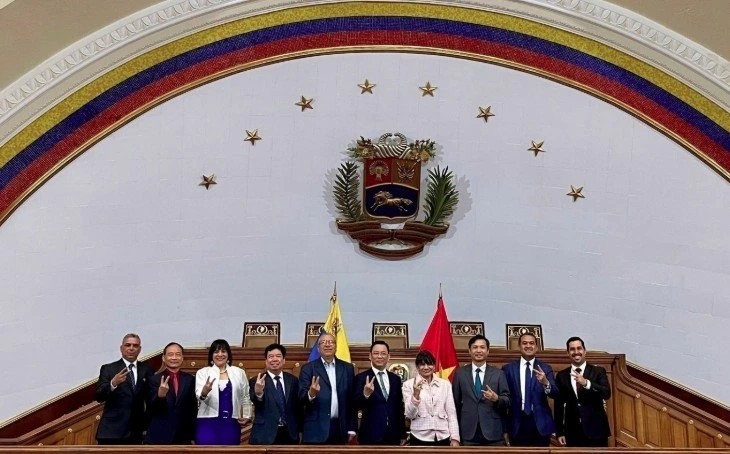 National
National
Vietnam News Today (May 30): Vietnam, Venezuela Reinforce Ties Through People-to-people Diplomacy
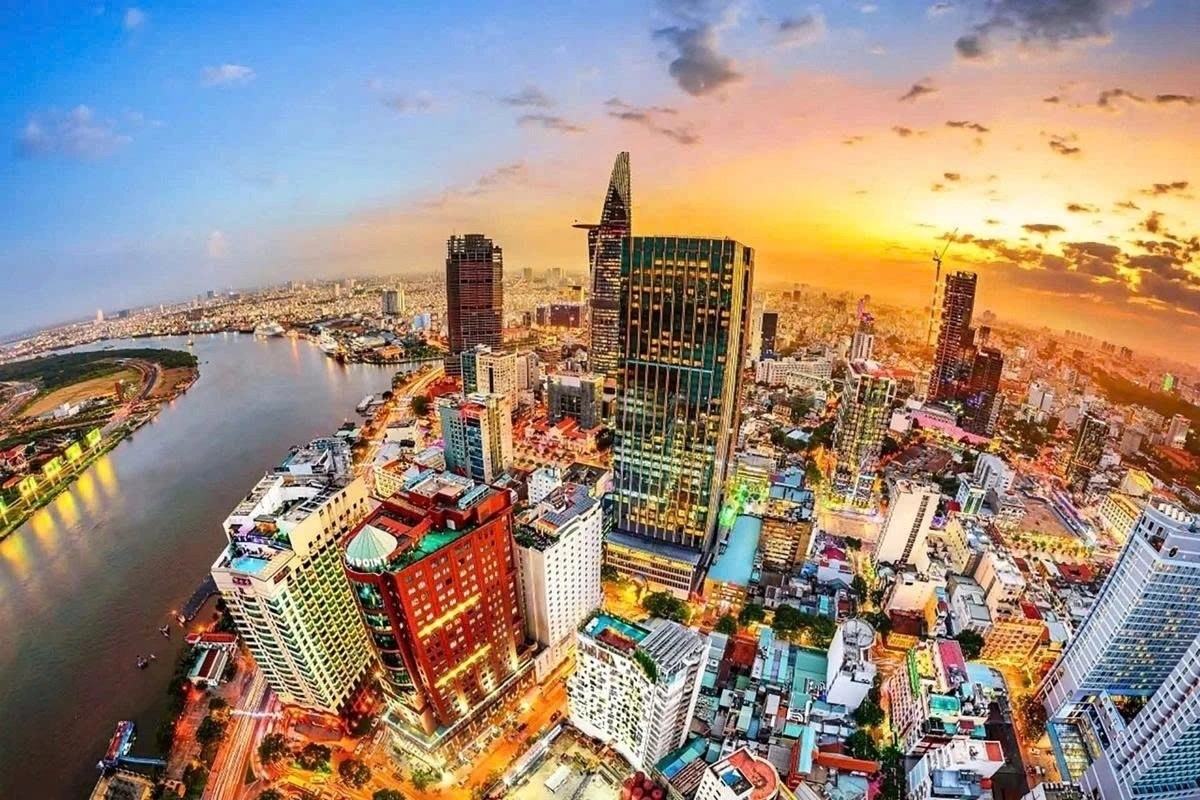 National
National
Vietnam News Today (Jun. 4): Vietnam - Promising Candidate for Southeast Asia’s Next Powerhouse
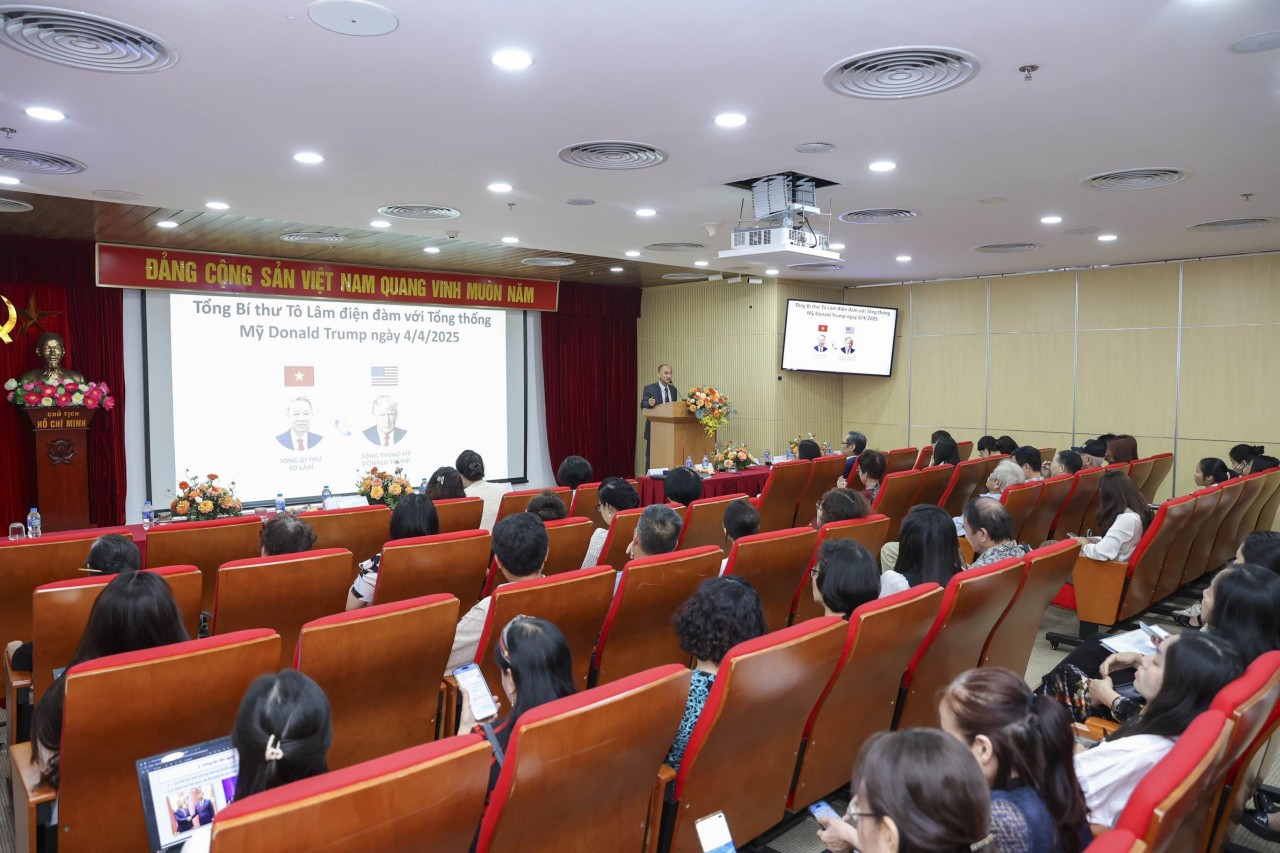 National
National
Vietnam News Today (May 29): Vietnam and Hungary to Expand Cooperation into New Areas
 National
National
Vietnam News Today (May 28): Vietnam and China Discuss Strategic Cooperation Orientations
 National
National

